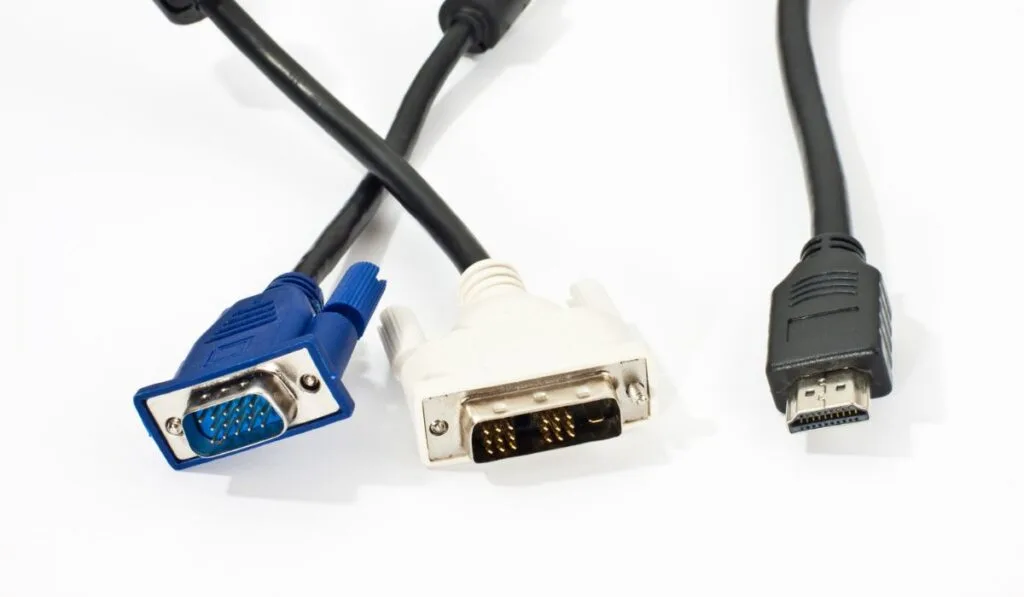For those who prioritize high-quality streaming or gaming in their computer setups, it’s important to consider not only your monitor, but the accessories you use with it. A 144Hz monitor is not enough if you want to display content in 1080p to 1440p or higher. The cables you use play a crucial role in delivering your monitor’s full potential. So, is it possible to use a USB-C cable to obtain a 144Hz refresh rate?
A refresh rate of 144 Hz is very demanding and only a few cables can handle this hertz. Yes, a USB-C can handle 144 Hz, but this also depends on the monitor as much as you need a high-quality cable. Finding the right cable which can effortlessly support 144 Hz is important.
Curious about why you should consider purchasing a cable with a 144 Hz refresh rate? Let’s look at the importance of refresh rates as well as the cables which support high rates like 144 Hz.
Why Are Refresh Rates Important?
The refresh rate measures how fast or often the display updates the screen contents. You can measure refresh rates in Hertz (Hz), indicating the times the display refreshes each second. A higher refresh rate means a smoother experience browsing on the monitor, and 144Hz is an excellent option for achieving this.
Do USB-C Cables Support 144Hz?

For any regular user not interested in a higher refresh rate, any cable will work. However, if you want content on your screen to run smoothly, that extra frame is crucial. One of the options you can have for cables that support 144Hz is USB-C.
Maintaining 144Hz is very demanding, so to achieve the results, you need a high-quality cable system that supports high-resolution content delivered at a high refresh rate.
The type C cable will support 144Hz. All you need is to connect the cable to a device with a USB-C interface, then you can connect the device to a monitor to get a seamless 144Hz refresh rate.
A 1440p resolution offers a clear picture, but for this, you need a different cable than when streaming in 1080p. 1440p is a slightly better resolution, so a good cable will be essential to deliver the high resolution excellently.
While it’s possible to achieve 144Hz with a USB-C cable, it should not come with two USB-C ends. A cable with one USB-C end and one HDMI plug is able to deliver a high refresh rate. USB type C cables offer a maximum of 60 Hz refresh rate. However, if you spring for one with an HDMI Alt Mode extension, like this one by CableCreation (on Amazon), you can use your display’s refresh rate of 144Hz or more.
With an Alt Mode cable, you plug the USB-C plug on one end and the HDMI on the other. This allows you to receive several other signal transmissions, including HDMI Ethernet Channel, 3D, ARC, and surround sound.
USB-C Requirements for 144Hz
You can get 144Hz on a USB-C cable, but there are several requirements the setup must satisfy. First, the cable must not have two USB-C ends. Instead, look for cables with an HDMI plug on the other end. Only these cables will deliver a high refresh rate.
By itself, the USB-C cable can provide up to 60Hz, but with an HDMI Alt Mode extension, this is bumped up to 144Hz or more. With the Alt Mode USB-C cable, you will have one HDMI plug and one USB Type-C on one cable.
Connecting the HDMI end from your tablet to your 4K TV will deliver 4K resolution. Also, the cable allows for different types of transmissions, including surround sound, HDMI Ethernet Channel, 3D, and ARC.
Other Cables That Support 144Hz

If you don’t have a USB-C cable and but want 144Hz on your display, you still have options. These are among the best choices that will deliver a high refresh rate:
DisplayPort
DisplayPort is one of the most commonly used cables and is preferred in gaming monitors. With DisplayPort, you can easily get 144Hz in 1440p. Something to note about the cable is the connectors at the ends. You might need either a DisplayPort or a Mini DisplayPort depending on your setup.
The standard DisplayPort, like this one from JSAUX (on Amazon), is often used in PCs and is available in a size almost similar to a USB connector. The Mini DisplayPort, like this one by QCEs (also on Amazon), is mostly available for Apple products like the Mac or Notebooks.
High-Definition Media Interface (HDMI)
High-Definition Media Interface (HDMI) ports are the kind you often find in streaming products. It’s also common in laptops, TV, graphics cards, and monitors. Different types of HDMI cables will vary in their capabilities. Not all the cables can handle 144Hz, but the majority are suited for this level of refresh rate.
An HDMI 1.4 or higher cable, like this one by IVANKY (on Amazon), will smoothly handle 144Hz streaming at 108p resolution.
Digital Virtual Interface (DVI)
Digital Virtual Interface (DVI) cables come in multiple types, so if you want one that supports 144Hz, opt for a Dual-Link DVI cable (on Amazon). These can deliver up to 144Hz at 1080p. However, you’re limited to a resolution of up to 1080p, so if you want something like 1440p, you might want to consider an alternative.
For most tasks 1080p is an acceptable resolution. That said, those interested in building a gaming setup might find a HDMI or DisplayPort cable more useful.
Conclusion
If you’re setting up a gaming station, you want all your tech to contribute to a smooth experience. Beyond optimizing your monitor, you also need to pay attention to finding a high-quality cable that can allow you to achieve up to 144Hz refresh rate.
There are several types of cables you can use in this case, including a USB Type-C cable with an HDMI Alt Mode extension, an HDMI cable, and a DisplayPort cable.
